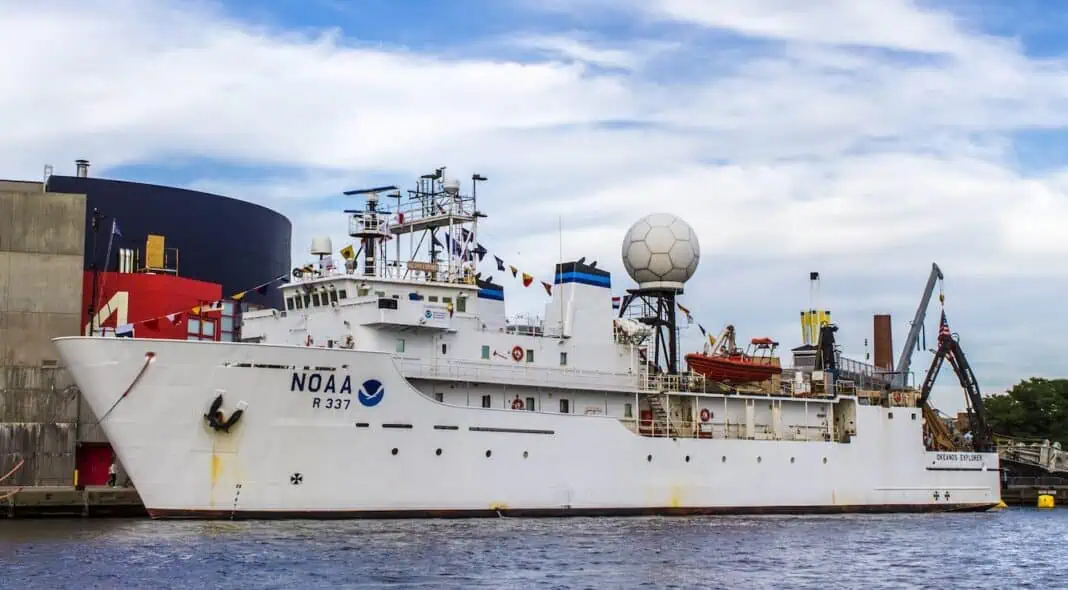A widely reported draft budget proposal is calling for major funding cuts to the US National Oceanic and Atmospheric Administration, and US lawmakers and environmental groups aren’t happy.
The draft proposal would cut NOAA’s budget by over 25%, with the worst parts affected being the agency’s fisheries enforcement and research operations, according to news reports.
US Representative Zoe Lofgren said:
“What NOAA does is crucial to the lifesaving weather research and services that it provides to the American people. This budget will leave NOAA hollowed out and unable to perform its life-saving work.”
US Senator Chris Van Hollen said:
“This move has nothing to do with efficiency – and in fact, it will endanger our communities and leave us all more vulnerable to destructive and costly natural disasters.”
Oceana’s Vice President for the United States Beth Lowell said:
“This is ludicrous! Whether you live on a coast or in the heartland, these proposed cuts to NOAA will impact you. Eliminating funding and staffing won’t just cause chaos and confusion within NOAA – it would undermine people and businesses across the country. It opens the door to overfishing and would leave fishers with uncertainty about how they will support their families. It would put Americans in harm’s way as critical weather updates may be offline. Protected animals like whales and sea turtles could go extinct with scientists no longer on duty. Congress must act to stop the dismantling of NOAA that would directly threaten the millions of Americans that depend on healthy oceans for their jobs, businesses, and seafood dinners.”
Earlier this month, US congressional Democrats held an “issues forum” to discuss efforts by the Trump administration and Elon Musk’s DOGE to gut NOAA.
According to a statement released at the time by committee Democrats:
“Dismantling NOAA is a central pillar of the extremist Project 2025 agenda—an effort to politicize science, silence experts, and hand over decision-making to Big Oil billionaires. Elon Musk’s DOGE is leading the charge, slashing life-saving services so they can steal from hardworking taxpayers and give more tax breaks to the ultra-wealthy. Scientists working to protect families from hurricanes, wildfires, and rising seas are being censored, intimidated, and purged—threatening the safety and well-being of every American.”
In March, more than 800 businesses and organizations across the United States signed a letter urging Congress to support and protect NOAA.
Citing grave concern over continued threats to the agency, including staff layoffs, budget cuts and other actions that jeopardize the agency’s key functions, the groups called on lawmakers to oppose threats to NOAA’s services and mission.
Project 2025, a “180-day playbook” promulgated by the conservative Heritage Foundation prior to the election of US President Donald Trump, says:
“[T]he next conservative president should consider whether … The National Oceanographic and Atmospheric Administration (NOAA) should be dismantled and many of its functions eliminated, sent to other agencies, privatized, or placed under the control of states and territories.”
The report further looks at NOAA’s six main offices:
- The National Weather Service
- The National Ocean Service
- The Oceanic and Atmospheric Research office
- The National Environmental Satellite, Data and Information Service
- The National Marine Fisheries Service, and
- The Office of Marine and Aviation Operations and NOAA Corps
About them, Project 2025 states:
“Together, these form a colossal operation that has become one of the main
drivers of the climate change alarm industry and, as such, is harmful to future U.S. prosperity. This industry’s mission emphasis on prediction and management seems designed around the fatal conceit of planning for the unplannable. That is not to say NOAA is useless, but its current organization corrupts its useful functions. It should be broken up and downsized.
“NOAA today boasts that it is a provider of environmental information services, a provider of environmental stewardship services, and a leader in applied scientific research. Each of these functions could be provided commercially, likely at lower cost and higher quality.”

